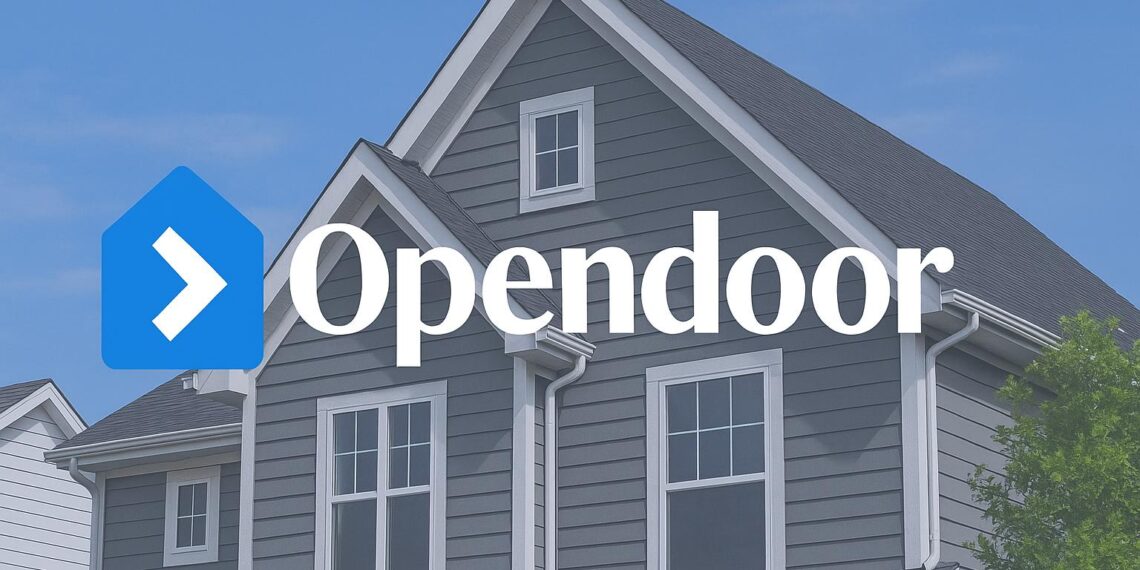Opendoor reports Q3 FY2025 on Thursday, Nov 6, 2025. Expectations center on sub-$1B revenue and a small GAAP loss, with investors laser-focused on: (1) resale gross margin per home (GPM), (2) inventory turns and aged inventory mix, (3) contribution profit per home after interest (CPH), (4) OpEx discipline and cash burn, and (5) guidance color into seasonally soft Q4. Expect elevated event volatility given housing affordability headwinds and leadership changes earlier this year.
Where expectations sit (consensus snapshot)
- Revenue: Street points to ~$0.8–$0.9B (down YoY on tighter acquisition pacing).
- EPS: Consensus implies a modest quarterly loss (around -$0.08 range).
- Call timing: Nov 6 at 5:00 p.m. ET (11:00 p.m. CET).
Interpretation: With volumes still constrained by affordability/mortgage-rate dynamics, investors will judge the print on quality of unit economics rather than headline revenue.
Business model refresher (for new readers)
Opendoor buys homes, performs light renovations, and resells them. Profitability hinges on:
- Acquisition accuracy (pricing to risk and spread),
- Holding costs (days to sell, interest expense),
- Renovation efficiency, and
- Sell-through velocity (inventory turns).
The company has been pivoting toward a leaner, agent-integrated, marketplace model to improve demand generation and reduce balance-sheet risk.
The five KPIs that will move the stock
- Gross profit per home (after interest): A clean, positive CPH with stable spreads is the bull case; any compression vs. Q2 will raise questions about pricing power.
- Inventory turns & age mix: Faster turns reduce holding costs and markdown risk; watch % of homes >120 days held.
- Buybox breadth and acquisition pace: Signals confidence in pricing algorithms and market liquidity.
- Contribution margin & opex ratio: Operating leverage from tighter SG&A is key to path-to-breakeven.
- Cash, liquidity, and capital partners: Capacity and cost of capital drive scalable acquisition throughput.
Housing backdrop to frame the print
- Affordability: Higher-for-longer mortgage rates continue to suppress move-up supply and constrain buyer pools—supportive for spreads if inventory stays tight, but a drag on velocity when rates lurch higher.
- New-build substitution: Builder incentives (rate buy-downs) compete with existing home resales in some MSAs; Opendoor’s partnerships and agent integrations aim to offset this.
- Regional divergence: Sunbelt markets can decouple; management color on MSA mix will matter for 4Q seasonality.
What “good” looks like vs. “bad”
Bullish setup
- Revenue near the high end of the ~$0.8–$0.9B range.
- CPH stable to up vs. prior quarter; inventory turns flat to faster.
- Operating cash use improves; guide implies balanced acquisitions into Q4 despite seasonality.
Bearish setup
- Revenues under ~$0.8B with weaker spreads or a rising aged-inventory share.
- Higher per-home holding costs (slower turns) and widened markdowns.
- Soft acquisition guidance, implying a slower 1H’26 pipeline.
Valuation sketch (scenario lens)
Given OPEN’s sensitivity to spreads/turns, a scenario framework is more useful than a single P/S multiple:
- Bear: Turns slow, spreads compress, and holding costs rise → contribution margin shrinks; equity leans on liquidity optionality.
- Base: Spreads hold, turns steady, buybox expands modestly → gradual operating leverage and improved cash cadence into 2026.
- Bull: Faster turns + resilient spreads + scaled marketplace/agent channels → sustained positive CPH and a credible breakeven path, supporting a premium to housing-adjacent comps.
Trading takeaways (not investment advice)
- Event vol: Consider staged entries/hedges if holding through the print.
- First read: Headline revenue and EPS; second read: CPH, turns, and aged inventory.
- Guide watch: Any 4Q commentary on acquisitions and partner capacity will shape next-day drift.
FAQ
When is the Q3 FY2025 report?
Thursday, Nov 6, 2025. The conference call is at 5:00 p.m. ET (11:00 p.m. CET).
Why is revenue still depressed YoY?
Management throttled acquisitions to prioritize unit economics over volume amid a choppy housing backdrop.
What’s the single most important metric?
Contribution profit per home after interest—it captures pricing, costs, and velocity in one line.
Could Opendoor return to growth in 2026?
If spreads hold and capital partners support higher acquisition throughput, growth can reaccelerate off a leaner base—execution and housing conditions are the swing factors.
Conclusion
For Q3 FY2025, Opendoor’s story is less about how much it sold and more about how well it sold. If the company prints stable-to-better per-home economics and disciplined cash use while signaling a balanced acquisition pace into Q4, the stock can sustain recent momentum. Miss on spreads or turns, and the market will quickly refocus on duration and liquidity risk.
Disclaimer
This article is for informational and educational purposes only and does not constitute investment advice or a solicitation to buy/sell any security. Real estate and housing-adjacent equities can be highly volatile. Do your own research and consider consulting a licensed financial advisor.






